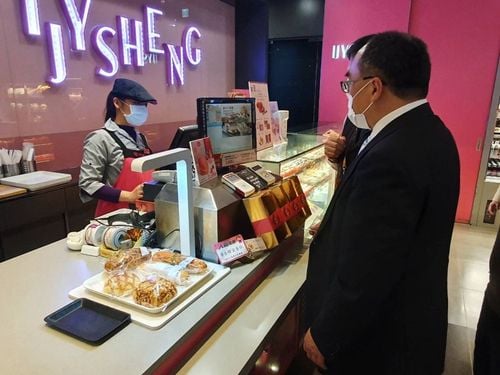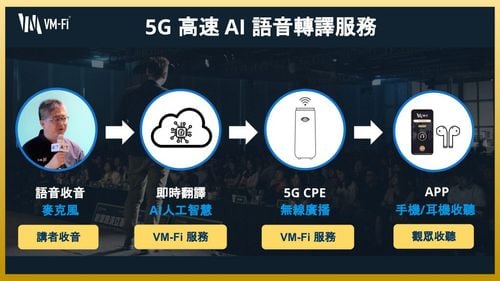【2020 Solutions】 Kapito Develops Customized AI Quality Inspection Solution for Electrode Aluminum Foil with a Missed Rate of Nearly 0%
Electrode aluminum foil is a key material for passive components in automotive electronics. In the past, it mainly relied on hole detectors that could only detect simple defects. With the advancement of automotive electronics, the demand for automotive electronics-related components has become stronger. Since the products involve vehicle safety and environmental testing issues, the missed rate should be maintained at 0%, while maintaining a misjudgment of less than 0.5%, which are relatively strict quality requirements. Smart manufacturing AI company Kapito developed the world's first customized electrode aluminum foil AI quality inspection solution.
The world's first customized AI quality inspection solution for electrode aluminum foil
Kapito is committed to providing global manufacturing innovations and providing reliable AI quality inspection solutions. fastable.ai uses multiple AI algorithms combined with multi-angle optical lenses to assist the manufacturing industry with product appearance inspection, reducing costs, stabilizing quality, improving efficiency, and expanding scale.
Targeting new business opportunities in automotive electronics in the future, Kapito developed fastable.ai, a hardware-integrated AI quality inspection solution. It has completed the customization of an electrode aluminum foil production line and assisted Liton Technology, a major electrical etching and foil forming manufacturer, with completing production line deployment throughout Taiwan, using AI image recognition technology to effectively improve the quality and efficiency of Liton Technology's production lines.
Feng-You Sun, founder and CEO of Kapito, said that automotive electronic products have higher requirements in environmental testing because they involve vehicle safety. The misjudgment rate of general commercial goods is between 2% and 10%. The misjudgment rate for automotive electronics should be maintained at 0% and may not exceed 0.5%. The quality inspection solution for a customized electrode aluminum foil production lines developed by Kapito mainly uses the AI algorithm of fastable.ai and big data analysis to achieve a misjudgment and missed rate close to 0%.

▲fastable.ai AI The defect detection solution has achieved remarkable results in reducing manpower, increasing scale, and shortening the payback period
After Liton Technology deployed fastable.ai in all production lines in Taiwan, it broke through the bottleneck of quality inspection manpower, and can stably monitor the quality of aluminum foil production 24 hours a day, expanding its production scale. In the past, more than ten kinds of aluminum foil defects were difficult to identify due to the limitations of aluminum foil production methods. fastable.ai can accurately detect the defects and further upgrade the quality. It is worth mentioning that in addition to quality inspection, fastable.ai also acts as the brain of production equipment. It utilizes big data analysis and management to predict the maintenance cycle of production equipment and effectively improve the availability of equipment.
Chang-Yuan Chen, spokesperson of Liton Technology, said that through in-depth cooperation with Kapito and the introduction of fastable.ai into the production line, the quality status can be monitored at any time, which greatly increases the confidence of Liton Technology in the quality of its aluminum foil products in the automotive market, achieving the highest quality products.
fastable.ai uses AI algorithms to achieve 0% missed rate and 0.41% misjudgment rate
Kapito was established in 2017. The founding team combined AI technology of Silicon Valley and the wealth of industry experience in Hsinchu Science Park, using cutting-edge technology to solve the most common pain points of Taiwan's traditional manufacturing industry, such as low birth rate and labor shortage.
fastable.ai is a device that integrates hardware and software developed by Kapito for "quality inspection." It uses an optical lens to capture images around the product, and then uses multiple AI algorithms for image recognition. It can effectively handle extremely complex defects that are difficult to identify with the naked eye, and achieve accurate judgment and analysis capabilities close to the human eye, helping factories automatically complete product appearance inspection. fastable.ai has achieved 0% missed rate and 0.41% misjudgment rate in the inspection of automotive electronics.

▲fastable.ai AI Defect detection solution applied to the leather inspection system interface
In addition, fastable.ai can be quickly installed in existing production lines based on the applicability of different industries, allowing many manufacturers who are unable to significantly update or change the design of existing production lines to more quickly make key processes smarter, helping them successfully transform data into revenue. After research and development is completed, it can be launched in the production line in as fast as 2 weeks. Applicable raw materials include metal foil, textile, leather, and mirror/glass. It can be applied to a wide range of industries, including textiles, metal processed products, automotive electronic components, semiconductors/precision products, plastic (rubber) injection products, and cosmetic products. Kapito's customers are mainly electronic products manufacturers.

▲Feng-You Sun, founder and CEO of Kapito


